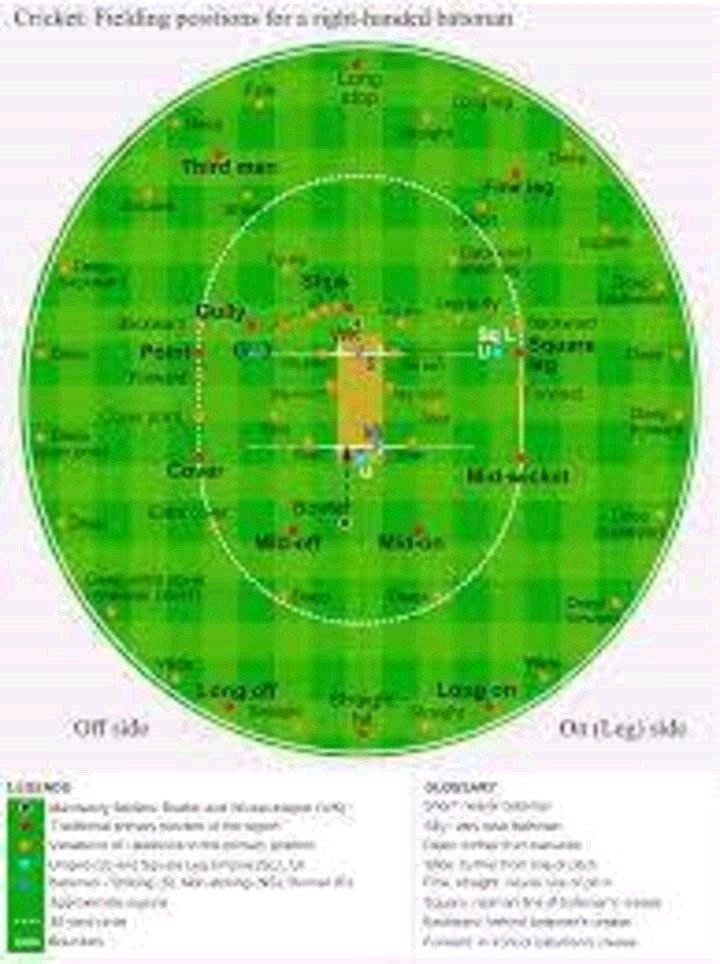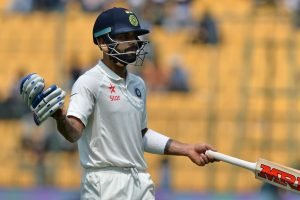
Cricket plays an important part in our life and a very interesting game and no cricket team in the world depends on one or two players.The team always plays to win. In this article we shall discuss about Cricket: History| Rules and Regulations| Fundamental skills
 Cricket: History| Rules and Regulations| Fundamental skills
Cricket: History| Rules and Regulations| Fundamental skills
History: The origin of Cricket can be traced back to Tudor era in the early 16th century England when it was termed as cricket. The game evolved as the national sport in the 18th century England and it was very prominent especially in London. In the year 1760, bowlers began to pitch the ball instead of rolling or skimming it.The introduction of ‘new laws’ in the late 18th century found inclusion of three stump wicket and lbw. Sussex was formed in the year 1839. The game was spread overseas by the British Empire and had found its foothold in India,North America,The Caribbean,South Africa,Australia and New Zealand.
The first ever Test match took place at the Melbourne Cricket Ground between Australia and England in the year 1876-77. During 20th century, test cricket continued to expand with the inclusion of India,West Indies and New Zealand before world war 2 and Pakistan, Sri Lanka and Bangladesh in the post war period.The International cricket council ICC organized the first cricket world cup in this version of the Game in the year 1975. By second half of the first decade of 21th century, Twenty20 cricket has become very popular and the inaugural World Championship was held in the year 2007.
Rules of the Game 2022
1. Two teams of 11 players each play alternately on the elliptical field. There is a rectangular strip located between stumps in the centre. The choice of the team batting or fielding is determined by a toss.
2. The bowlers bowls the ball towards the wicket in order to make the balls fall off the wicket. If he succeeds, the batsman is out, batsmen have to defend their wickets and attempt to hit the ball out of reach of their opponent.
3. At the umpire’s signal, the fielding team takes its place on the field, while the first 2 batsman of the opposing team take its position in front of the wickets.
4. The batsmen attempts to score as many runs as possible before the ball is returned. The other members of the fielding team try to stop the batsman from scoring runs by recovering the ball as quickly as possible and throwing it at the stumps.
5. A series of bowls is called an over. The bowler switches position with one of the players of his team once his over is completed. After an over, the fielding team changes ends. The winning team is the one who scores the most runs.
6. A run is completed when the 2 batsmen cross each other and reach their opposite ends.
Awarding of Runs:
1. When a bowl is no ball, the batting team is awarded one run. Apart from this, he can sore runs by hitting the ball for running.
2. When the ball is touched by any part of the batsman’s body expect his hands, this is called a leg bye.
3. If the batted ball lands outside the boundary line without touching the ground, the batsman is awarded 6 runs.
4. In addition to scoring runs, the batsman must also defend his wicket. He is not required to run, even if he hits the ball. This benefits a batsman who might not hit the ball very fast.
5. If the batted ball touches the boundary line after touching the ground, 4 runs are awarded.
6. When a run is made without the ball touching the bat or any part of the batsman’s body, this is called a bye.
Terminology used in the Game:
1.Bye:
When the batsman takes run due to misfielding.
2.leg bye :
When the batsman takes the run by the snick of pads.
3. Appeal:
It is request or shout by fielding players in anticipation of batsman to be given out by the umpire.
4. Bouncer:
When the bowler bowls the ball above the shoulder level.
5. Century:
A batsman scoring one hundred runs.
6. Hook area:
It is hitting the high raised ball with force towards the leg side.
7. No ball:
When the bowler commits some non-legal action to bowl.
8. Toss:
It is the procedure before the match decide which team will performs first.
9. Dot ball:
A good length ball on which batsman cannot score runs.
10. Hat trick:
A bowler get three wickets in three successive balls.
Fundamental skills of Cricket 2022
Batting Skills:
1.Grip
2. Stance
3. The back lift
4. Defensive batting
5 Strike
Bowling skills:
1. Leg spin
2. Off spin
3. Out swing
4. In swing
5. Googly
Dhoni Stats All time
| International information | |||||||||||||||||||||||||||||||||||||||||||||||||||||
|---|---|---|---|---|---|---|---|---|---|---|---|---|---|---|---|---|---|---|---|---|---|---|---|---|---|---|---|---|---|---|---|---|---|---|---|---|---|---|---|---|---|---|---|---|---|---|---|---|---|---|---|---|---|
| National side |
|
||||||||||||||||||||||||||||||||||||||||||||||||||||
| Test debut (cap 251) | 2 December 2005 v Sri Lanka | ||||||||||||||||||||||||||||||||||||||||||||||||||||
| Last Test | 26 December 2014 v Australia | ||||||||||||||||||||||||||||||||||||||||||||||||||||
| ODI debut (cap 158) | 23 December 2004 v Bangladesh | ||||||||||||||||||||||||||||||||||||||||||||||||||||
| Last ODI | 9 July 2019 v New Zealand | ||||||||||||||||||||||||||||||||||||||||||||||||||||
| ODI shirt no. | 7 | ||||||||||||||||||||||||||||||||||||||||||||||||||||
| T20I debut (cap 2) | 1 December 2006 v South Africa | ||||||||||||||||||||||||||||||||||||||||||||||||||||
| Last T20I | 27 February 2019 v Australia | ||||||||||||||||||||||||||||||||||||||||||||||||||||
| T20I shirt no. | 7 | ||||||||||||||||||||||||||||||||||||||||||||||||||||
| Domestic team information | |||||||||||||||||||||||||||||||||||||||||||||||||||||
| Years | Team | ||||||||||||||||||||||||||||||||||||||||||||||||||||
| 1999–2004 | Bihar cricket team | ||||||||||||||||||||||||||||||||||||||||||||||||||||
| 2004/05–present | Jharkhand | ||||||||||||||||||||||||||||||||||||||||||||||||||||
| 2008–2015 | Chennai Super Kings (squad no. 7) | ||||||||||||||||||||||||||||||||||||||||||||||||||||
| 2016–2017 | Rising Pune Supergiant | ||||||||||||||||||||||||||||||||||||||||||||||||||||
| 2018– | Chennai Super Kings (squad no. 7) | ||||||||||||||||||||||||||||||||||||||||||||||||||||
| Career statistics | |||||||||||||||||||||||||||||||||||||||||||||||||||||
|
|||||||||||||||||||||||||||||||||||||||||||||||||||||
